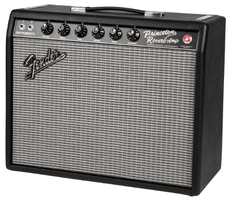
In this Fender 65 Princeton Reverb review, I’ll reveal everything you need to know about the amp that recording artists called the “hitmaker!”
The ’65 Blackface Princeton’s naturally clean overdriven sound with its “long-spring” reverb made it one of the most enduring amps in the Fender line.
Keep on reading to find out exactly what this amp has to offer!
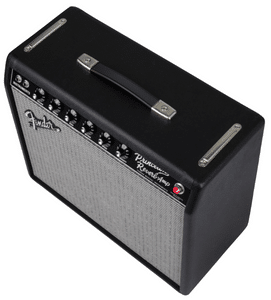
What Is The Fender 65 Princeton Reverb?
This amp is a reissue of the original ’65 Blackface Princeton. The Fender Princeton model has been in continuous production throughout the years due to its immense popularity among guitar players.
Its low power output, compactness, versatility, and relatively low cost have made it a favorite among students and professionals.

Fender Company Profile
Unless you just started playing the guitar today, you are undoubtedly familiar with the Fender brand. These guitars have literally helped define rock n’ roll and blues history. Their original factory was in Fullerton California.
Fender guitars are now made in many parts of the world, with the American-made and Custom Shop guitar lines still made with pride in the USA.
The Fender Broadcaster was first introduced in the autumn of 1950. It became known as a “Nocaster” after the Broadcaster label was removed from the headstock to avoid a trademark lawsuit from Gretsch over their “Broadkaster” drum set. The guitar was re-branded the Telecaster and the rest is history!
Fender has also led the way with amplifiers. Their “K&F” (Doc Kauffman and Leo Fender) series were the very first Fender amps, made by the K&F Manufacturing Corporation. These amps formed the basis of the Woodie, Tweed, Blonde, Brownface, Blackface, and Silverface series.
Fender makes an extensive line of pickups for all their guitars and bass guitars. Their Custom Shop pickups are hand-wired with hand-beveled magnetic pole pieces and period-correct wire and bobbins.
Who Is The Fender 65 Princeton Reverb For?
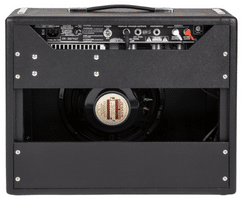
The ’65 Princeton is for players that want a single-channel, low-powered amp that’s portable enough to take anywhere easily. It’s an excellent option for beginning guitar players that want an amp that they’ll never outgrow.
This amp can take you from quiet home play to the ruckus you make during garage band practice.
It’s an excellent choice for the recording studio and small club performances.
How The Fender 65 Princeton Reverb Works
The Princeton features a straight-forward single-channel, no master volume design that provides beautiful sound clarity and plenty of headroom at all settings. It gives you that unique Fender chime that only a Princeton can provide.
The all-tube signal path utilizes three 12AX7 and one 12AT7 in the preamp section with two “Groove Tubes” 6V6 tubes in the amp section. A 5AR4 rectifier tube provides power sag to help give the amp warmth and natural compression.
The Front Control Panel

Two instrument inputs give you a choice of regular and -6dB (input 2) for active pickups.
Use the Volume control to adjust the overall gain level. It works without a Master Volume and will typically saturate nicely at levels of 8 or above, depending on the guitar.
The EQ stack is straightforward with just a Treble and Bass adjustment. The midrange is always well-balanced, no matter where you set the Treble and Bass controls.
There is one reverb level knob, while the tremolo has adjustments for speed and intensity.
The Rear Control Panel

The rear control panel has the power on/off switch (no standby) and the speaker, footswitch, and reverb jacks.
Two parallel speaker jacks allow you to connect to two 16-Ohm external cabinets (for a total of 8 Ohms). Do not use the internal 8-Ohm speaker together with an external cabinet, or you could damage the amp. Most players use it as a combo amp with only the internal speaker connected.
The footswitch jack allows you to connect the Reverb/Vibrato pedal (included).
Reverb output and input RCA jacks connect the amp to the reverb long-spring tank inside the cabinet.
Fender 65 Princeton Reverb Specifications
| Item | Specification |
|---|---|
| Power | 12 watts RMS |
| Channels | One |
| Controls | Volume, Treble, Bass, Reverb, Speed, Intensity |
| Preamp Valves (Tubes) | 3 x 12AX7, 1 x 12AT7 |
| Power Amp Valves | 2 x 6V6 (Groove Tubes) |
| Rectifier | Tube (1 x 5AR4) |
| Inputs | Two Instrument Jacks (1/4″, Input 2 operates at -6dB) |
| Effects | Tube Reverb and Tube Tremolo |
| Effects Loop | No |
| Line Outs (on back of amp) | Two 1/4″ Parallel Speaker Jacks |
| Footswitch | 2-Button (Reverb On/Off, Tremolo On/Off), Included |
| Speaker | One – 10″ Jensen® C10R with Ceramic Magnet, 8 Ohm |
| Cabinet | Birch Plywood with Silver Grill Cloth |
| Covering | Black, Textured Vinyl |
| Handle | Black Molded Plastic Strap with Nickel-Plated Caps |
| Amp Cover | ’65 Princeton Reverb®, Black (Included) |
| Dimensions | H: 16″ (40.6 cm), W: 19.875″ (50.5 cm), D: 9.5″ (24.13 cm) |
| Weight | 34 lbs. (15.4 kg) |
| Price (Street) | $1,300 |
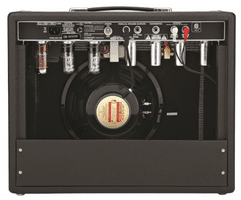

Features And Benefits
Check Out These Great Fender Features!
Compact Design
The Fender 65 Princeton Reverb has a compact design that makes it easy to transport to your next gig. It’s big enough to make itself heard but small enough to be unobtrusive.
Get two amps, and you’ll have an excellent stereo setup that won’t break your back or wallet.
Sturdy Cabinet Construction
The amp’s electronics and speaker are housed in a sturdy birch plywood cabinet. It’s strong enough to withstand the rigors of the road but not too heavy.
Footswitch Included
The Reverb/Vibrato footswitch is “a must” to turn these tube-driven effects on and off during or between songs. Fender includes the footswitch with the purchase of the amp, which is how it should be!
Amp Cover Included
Yes, a custom-fitted amp cover is also included! In the “old days,” you couldn’t buy a Fender amp without getting the cover to match. If you gig your amp and want to keep it looking and working its best, always keep it covered!

What I Like About The Fender 65 Princeton Reverb
Here are some of the things I like most about this amp.
Takes Pedals Well
Although the amp doesn’t have an effects loop, it takes all types of pedals well on the front end. I have used my Princeton with any pedal you can name, and the amp always retains its trademark sound with minimal background noise.
Lush Reverb And Tremolo
The ’65 Princeton is known for its “sweet” reverb, tube-driven through a “long-spring” reverb tank for exceptional performance. This is one of the big payoffs of the amp. You’ll never want to use a digital reverb once you try the Princeton!
Blackface Fender amps are renowned for their tube-powered tremolo, and the ’65 Princeton reissue is no exception. It can be set to give you anything from a subtle shimmer to rich and pulsating.
Natural-Sounding Overdrive
Cranking the amp’s volume above 8 gives you a natural-sounding overdrive that turns into a subtle distortion without blowing the windows out of the room. You can get a great saturated sound with single-coil and humbucker pickups!
I like to give the front-end a kick in the pants with an overdrive pedal, which provides the amp with a creamy, rich sound at all volume levels.
Back off the guitar’s volume level a touch, and the amp cleans up nicely for rhythm work. Jazz players love this amp’s crystal clear and mellow tone, especially with the Treble control tweaked down a touch.

What You Might Not Like About The Fender 65 Princeton Reverb
There is very little not to love about this Princeton amp; however, you might consider a few things.
Cost
Although the Princeton was initially introduced as a medium-cost beginner’s amp, the price of all-tube equipment has progressively escalated over the years. This could very well put this amp out of the financial reach of students just starting their guitar journey.
To be fair, you do get a lot for your money, including the footswitch and amp cover!
No Effects Loop
An effects loop would have made this amp absolutely primo for the player that uses time-based pedals like a delay or chorus. Fender may have wanted to copy the ’65 Princeton specs accurately since it is a “reissue.”
Adding effects loop circuitry between the preamp and amp stages would have altered the sound compared to the original.
Not Loud Enough For Playing Large Venues
This amp is excellent for bedroom play, band practice, and small clubs, but it probably won’t make it in larger spaces without some help from the PA system.
The Princeton gives you an excellent mic’d sound, so don’t hesitate to run it through the house mixing board.

Beware Of The External Speaker Setup Requirements!
This amplifier requires a minimum load of 8 Ohms! To use both parallel speaker jacks, you have to disconnect the internal speaker and connect the amp to two 16 Ohm cabinets (for a total load of 8 Ohms).
Do not use the internal 8-Ohm speaker together with an external cabinet, or you could damage the amp.
Is The Fender 65 Princeton Reverb Legit?
The ’65 Princeton reissue sits somewhere between the Champ and the Deluxe in terms of size, power output, and tone. To be sure, they all have their own distinctively unique sound.
The thing about the Princeton is that I find it has desirable characteristics of both the other two amps, essentially giving you the best of both worlds!
’66 Champ ’65 Princeton ’67 Deluxe
I own one of each, and I never get tired of changing between the three, but I always come back to the Princeton as my all-around favorite.
So, yeah, the Fender 65 Princeton Reverb is totally legit!

Frequently Asked Questions
Here are some things I get asked about the Fender ’65 Princeton and amps in general.
Where Is The Fender 65 Princeton Reverb amplifier made?
The amplifier is “assembled” in the U.S.A. (Corona, California), but it’s unclear where all the parts are manufactured. Some of them may be sourced from other countries.
What Does Fender Blackface Mean?
“Blackface” refers to the black front control panel that Fender started using in 1963. In 1967 the control panel was changed to brushed aluminum, and these amps became known as the “Silverface” series.
Can You Gig With A Fender Princeton?
Yes, you can gig with this amp in small venues like clubs and bars. You can always mic the amp through the house PA system to play larger places.
Who Uses A Fender Princeton Reverb?
The Princeton Reverb is used by Jim Campolongo, Marty Stuart, and Ryan Adams. It became a favorite amp among studio artists in the 1970s due to its portability, sound clarity, and low power output.
Are Tube Amps Better For Pedals?
Not necessarily. It really depends on the guitar and amp, the pedals you use with them, and your playing style/technique. I love the more organic sound that I get with a tube amp, so I tend to favor the way pedals make this kind of amp sound.
If you like the sound of your guitar and amp, then you can definitely find pedals that will work and sound great. It’s really a matter of trial and error.
For more info, see What Is A Guitar Stomp Box – Attractive, Little, Tantalizing.
Do You Need An Overdrive With A Tube Amp?
It depends on the tube amp. Single-channel amps that don’t have a Master Volume control, like the Fender ’65 Princeton reissue, will give a certain amount of natural breakup as you crank the volume, especially with humbucking pickups. If you want more overdrive or distortion, you have to use a pedal.
Tube amps with a Master Volume control or a high-gain channel allow you to dial in more overdrive without boosting the guitar’s audio input signal with an overdrive, distortion, or fuzz pedal.

Final Thoughts
I hope you enjoyed this Fender 65 Princeton Reverb Review. Fender marketed the Princeton as a “low-budget” amp for beginners, but professionals soon adopted it.
The portability, tone clarity, and low-medium power requirements made the original blackface Princeton the go-to amp for studio recording and playing small clubs.
If you are looking for an all-tube amplifier with the classic Fender sound that sits somewhere between the Fender Champ and Deluxe, then you should give the ’65 Princeton reissue a serious look! It faithfully recreates everything that made the original a legendary amp!

Tell Me What You Think
Please leave a comment below if you enjoyed this Fender 65 Princeton Reverb review, have any questions about this product, or want to leave your review. I will be happy to help you.
- Do you own an original or reissue Blackface Princeton amp? What do you think of it?
- Do you use pedals with your Princeton amp? Which ones?
- What type of music do you or would you use a Fender Princeton to play?
- After reading this review, would you buy a ’65 Princeton Reverb reissue?



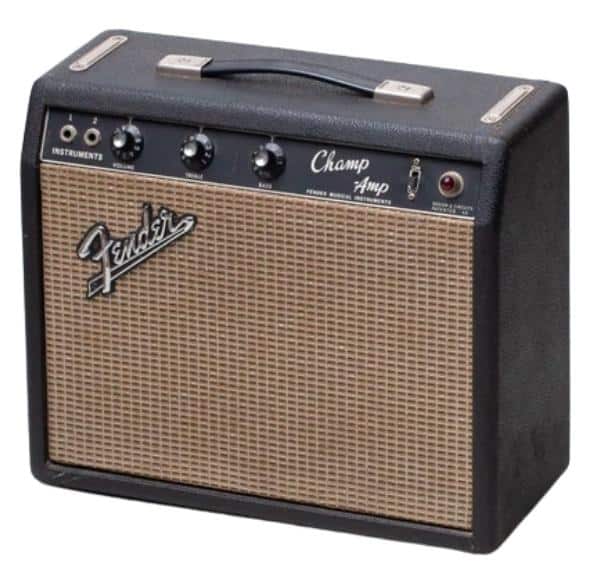
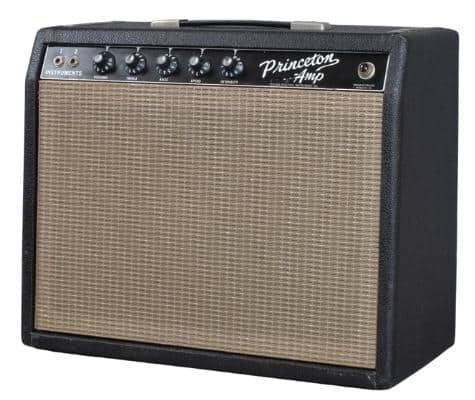
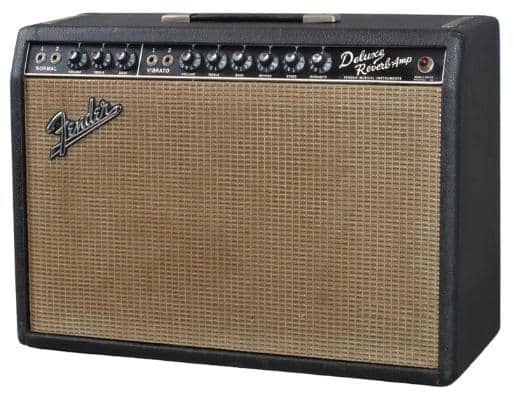

I now understand why I liked my brother-in-law to play guitar. He had a Fender guitar and amp that he used constantly. He was always playing until cancer caught up to him. My nephew still has both of them. He plays occasionally and the music he puts out is so sweet. There is nothing in today’s market that even comes close to the clarity from the guitar and the amp.
Thanks for reminding me how much I like listening to someone who likes to play and has a Fender.
Jerry
Hi, Jerry
Thank You for your comments!
So sorry to hear about your brother-in-law. Yes, the Fender sound has become iconic in every sense of the word. It’s really a big part of our musical culture, thanks to all the big-name artists that have used their amps and guitars over the years.
I have lots of musical equipment, but I like Fender best.
Frank
Hello FRank,
It’s hard to find any faults with this amplifier, but there are a few minor complaints that people have had about it. For example, some people have said that they wish it had more power for larger venues. However, it has got a lot more depth than you would expect from a vintage style amp, which makes it great for all kinds of different genres. It is a very versatile amplifier, with some additional features not found on most amps at this price point.
After all, I think that the Fender 65 Princeton Reverb is a great amp for any guitar player who wants to add some vintage sound to their music. It’s an amp that will work well for both beginners and experienced players alike.
Have great day.
Hi, Safia
Thank You for your comments!
Yes, this Princeton reissue amp is low-medium powered, but it’s ideal for practice playing in small to medium-sized venues. You can always mic it into the mixing board to have plenty of volume through the PA system. The amp’s small size allows you to crank the volume to 10 and really “open it up” to get all that great-sounding tube saturation.
I have a Princeton, and I very seldom turn the volume above 7 or 8 at home. It’s a lot louder than most people think, and it always sounds fantastic, no matter what guitar I plug into it.
Frank